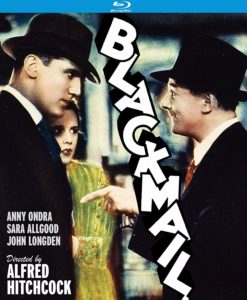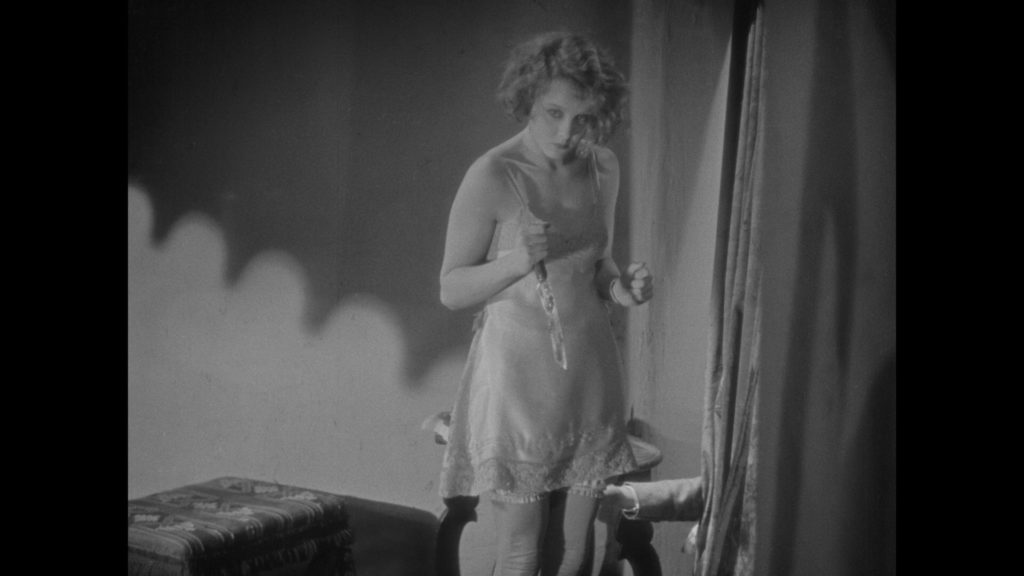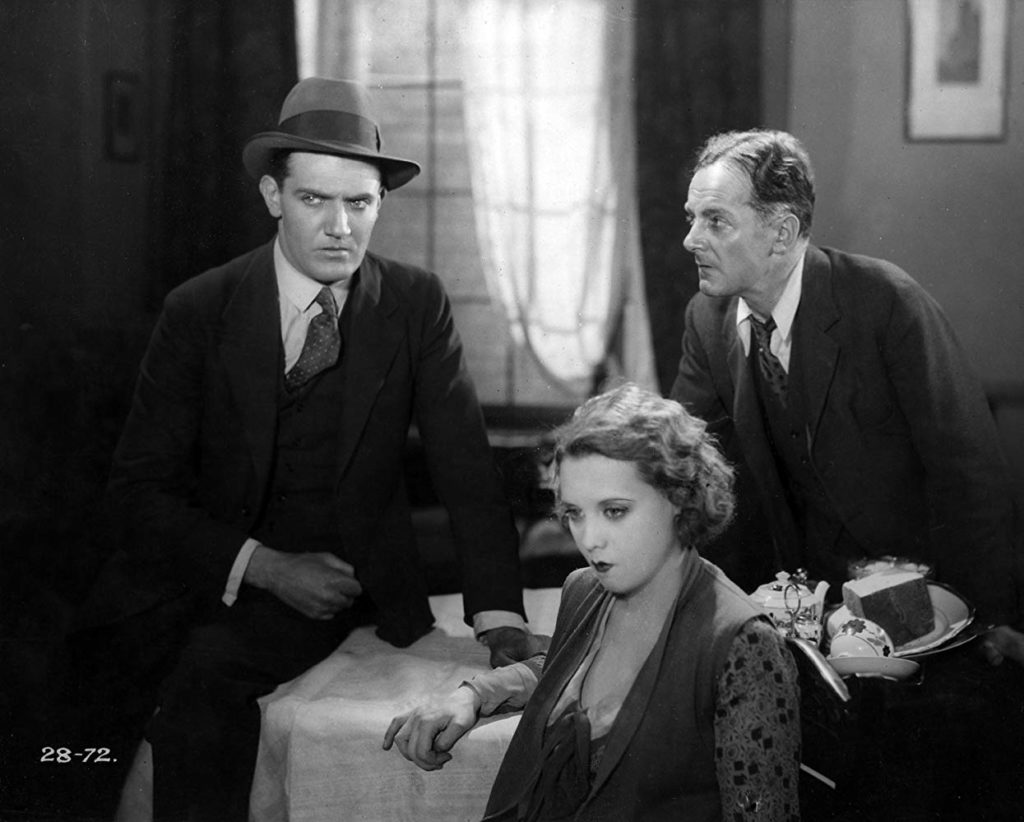Pioneering Early Hitchcock Thriller Lands a Special Edition with no less than Three Vibrant Versions.
DIRECTED BY ALFRED HITCHCOCK/1929,1930
BLU-RAY STREET DATE: AUGUST 13, 2019/KINO LORBER STUDIO CLASSICS

It’s the stuff of 1000 horror movies. A woman in her undergarments emerges from a desperate moment of trauma- knife in hand. Her face, once vibrant and even happy, is now only austere and cold. Eerie; though as beguiling as ever. Perhaps moreso. Some will call what she has done murder. Others will recognize it as self-defense. All will know it as cheating. One will see the opportunity for… blackmail.
The fact of the matter is, Alice (Anny Ondra) should’ve never been in that man’s apartment at all. It’s true that her Scotland Yard detective boyfriend, Frank (John Longden) is always terribly caught up in his work. And it’s also true that London is a big place, full of more interesting and freely available men. But a committed relationship is a committed relationship… Unfortunately, any demonstration of the depth of such commitment falls solely upon Frank.
Having been assigned to this case, Frank happens upon a handy bit evidence that only he would recognize as an immediate tell. Alice killed this guy all right. The question then becomes, what will he do about it? His decision to stand by her leaves her open to… blackmail.
By the way, Blackmail isn’t a horror movie at all. (It is, fact, adapted from a play by Charles Bennett.) But, being that this set contains no less than three separate versions of this late silent/early talkie, one might say that there’s plenty of room for interpretation. Filmed at the very tail end of the silent era, Hitchcock, being his cutting-edge self, filmed Blackmail in a manner that also lent itself to a synchronized sound redo. It would be Britain’s first-ever synchronized sound film- and a dynamo at that.

Not content to simply add talking, sound effects and whatnot to a film that was intended as silent storytelling (a common enough practice), Hitchcock pushed the envelope in his use of the new technology. From a clever use of a scream as a transitional element to Alice’s famously subjective amplification of a nearby character’s repeated, mentally “stabbing” pronunciation of the word “knife!”, the filmmaker is on the wavelength of sound-on-film from the get-go.
That’s not to say that Hitchcock shifted his directorial method once Al Jolson, across the great pond, opened his big mouth. Part of what makes Hitchcock so great is his continuously masterful implementation of silent film storytelling throughout his entire fifty-plus-year career.
The silent version of Blackmail is also included on this newly issued set from KL Studio Classics (as is an alternate version of the sound version, in the narrower 1.20:1 aspect ratio, which was more common of the era). Though it includes inter-titles (though limited in use, as reflected in the best-directed films of the silent era), this version, strictly for the technologically late adapting theaters of 1929, runs only seventy-six minutes as opposed to the sound version’s eighty-five minutes. Both versions are meticulous restorations courtesy of the British Film Institute.
Interestingly, in the silent version, Alice’s lustful double-dealings, as well as her deathly incident that is the crux of the film, play more pronounced, giving off a more appropriate sinister vibe. Likewise, her lonely walk through a foggy, strangely uninhabited London, takes on an increased resonance. The glassy yet emotive eyes of Scandinavian beauty Anny Ondra, this early “Hitchcock blonde” (a holdover from the director’s prior 1929 film, The Manxman), pop with increased intensity, evoking regret that her Western film career could’ve gone longer and larger.

The Mont Alto Motion Picture Orchestra provides an engaging and appropriately melodramatic score for the silent version. At times the music’s main theme beers into the realm of overly repetitive, though on the whole, this is a splendid effort. Particularly outstanding is the scoring of the film’s famed final chase through the British Museum. This is a score that certainly seems to “get” early Hitchcock.
Were it not for Hitchcock’s bold, cleverly motivated forward-thinking use of the new synch-sound technology, the silent version of Blackmail would likely be the go-to edition. As it were, Hitchcock’s use of sound, while rather brilliant in the moment, demands priority- but it is not the whole story. On his in-depth audio commentary, film historian Tim Lucas goes into considerable depth about all facets of Blackmail.
That ninety years later such an accomplished and important work from a vital film artist as Alfred Hitchcock not only survives but thrives as a viable piece across three separate versions deeply reiterates the inherently malleable and fluid nature of movies. It can be said that there is no “definitive version”, and yet it’s a classic all the same. Thankfully, Kino Lorber provides all three major variations. That is why no collector of great should be without this Blu-ray special edition of… Blackmail.

